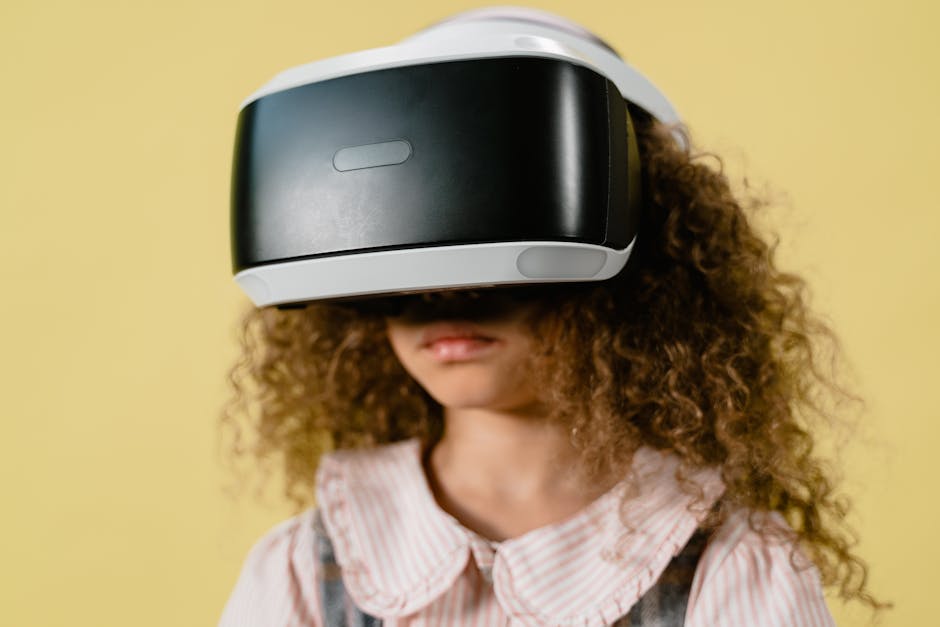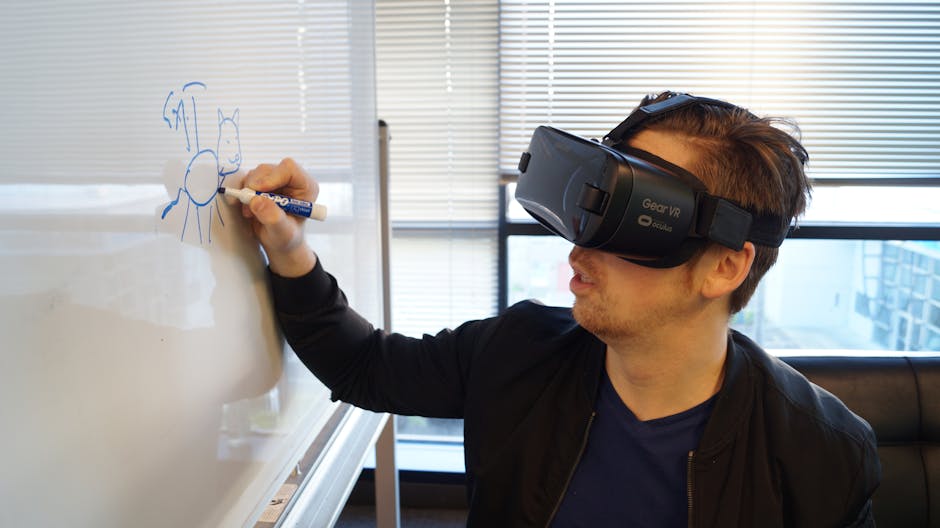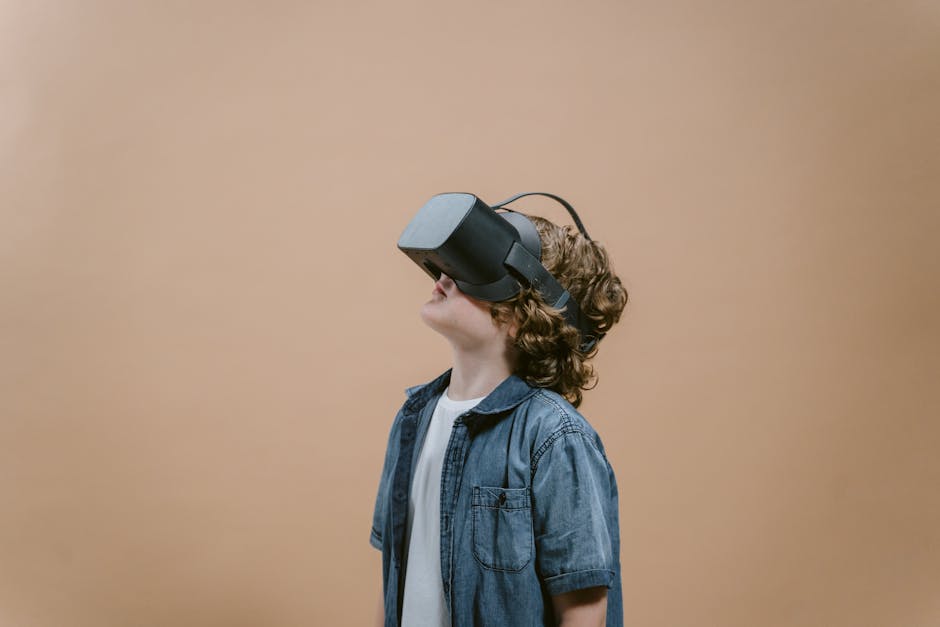Virtual Education Trends Reshaping Modern Learning
Education has always been a cornerstone of society, shaping the minds and futures of generations to come. In recent years, the landscape of education has been undergoing a significant transformation, propelled by advancements in technology and the rise of virtual education. As we delve into the world of virtual education, we witness a plethora of trends reshaping the way we learn, teach, and engage with knowledge. From online classes to virtual reality simulations, the realm of virtual education is expanding at a rapid pace, offering new possibilities and challenges.
The Rise of Online Learning Platforms

One of the most prominent trends in virtual education is the rise of online learning platforms. These platforms provide learners with the flexibility to access educational content anytime, anywhere, breaking down the barriers of traditional education. Platforms like Coursera, Udemy, and Khan Academy offer a wide range of courses taught by experts from around the world, catering to diverse interests and skill levels.
For example, Coursera partners with top universities to offer online courses, specializations, and even full degree programs. Learners can engage with interactive quizzes, peer-graded assignments, and discussion forums to enhance their learning experience. This trend has democratized education, making it more accessible and affordable for individuals across the globe.
Personalized Learning Experiences

Another key trend reshaping modern learning is the focus on personalized learning experiences. Virtual education platforms utilize data analytics and artificial intelligence to tailor educational content to the individual needs and preferences of each learner. By analyzing user behavior and performance, these platforms can recommend specific courses, modules, or resources to optimize learning outcomes.
For instance, adaptive learning systems like Knewton use algorithms to adjust the difficulty level of questions based on each student’s responses. This personalized approach ensures that learners are challenged at the right level and receive targeted support where needed. By catering to individual learning styles and pace, virtual education is revolutionizing the way knowledge is acquired and retained.
Interactive and Immersive Technologies

One of the most exciting trends in virtual education is the integration of interactive and immersive technologies. Virtual reality (VR) and augmented reality (AR) are being increasingly used to create engaging and realistic learning environments, allowing learners to explore concepts in a hands-on manner. For example, medical students can practice surgical procedures in a virtual operating room, while history students can visit ancient civilizations through immersive VR simulations.
These technologies enhance the learning experience by making it more interactive, engaging, and memorable. By immersing learners in virtual environments, educators can foster creativity, critical thinking, and problem-solving skills. As VR and AR continue to evolve, the possibilities for virtual education are limitless, offering new ways to engage with content and enhance learning outcomes.
Global Collaboration and Connectivity

Virtual education has also facilitated global collaboration and connectivity among learners, educators, and experts from different parts of the world. Through online forums, video conferencing, and collaborative projects, students can engage with diverse perspectives and cultures, broadening their understanding of the world. This trend not only promotes cultural exchange and mutual learning but also prepares students for the globalized workforce of the future.
For example, platforms like ePals connect classrooms across countries, allowing students to interact with peers from different cultural backgrounds and exchange ideas on various topics. Virtual exchange programs offer a unique opportunity for students to develop intercultural competence, communication skills, and global awareness. By fostering a sense of global citizenship, virtual education is breaking down geographical barriers and promoting mutual understanding among individuals worldwide.
Microlearning and Bite-Sized Content
Microlearning, which involves delivering content in small, digestible chunks, has emerged as a popular trend in virtual education. Short videos, quizzes, infographics, and interactive modules are being used to deliver information quickly and efficiently, catering to the short attention spans of modern learners. This trend is particularly beneficial for on-the-go professionals or individuals with limited time for traditional learning.
For instance, language learning apps like Duolingo offer bite-sized lessons that can be completed in just a few minutes a day. By breaking down complex topics into manageable segments, microlearning enables learners to retain information more effectively and stay motivated throughout their learning journey. This trend is revolutionizing the way we consume and engage with educational content, making learning more accessible and adaptable to our busy lifestyles.
Blended Learning Environments
Blended learning, which combines traditional classroom instruction with online learning components, has gained traction as a popular approach to modern education. This trend allows educators to leverage the benefits of both in-person and virtual instruction, creating a more dynamic and flexible learning experience. By incorporating online resources, videos, and interactive modules, teachers can enhance traditional classroom activities and provide additional support to students.
For example, flipped classrooms reverse the traditional model of instruction by having students watch lectures or complete readings online before coming to class for discussions and activities. This approach allows for more personalized and interactive learning experiences, as students can engage with content at their own pace and receive immediate feedback from instructors. Blended learning environments are reshaping the way we think about education, fostering collaboration, creativity, and critical thinking skills among students.
Ethical Considerations and Privacy Concerns
As virtual education continues to evolve, ethical considerations and privacy concerns have emerged as critical issues that need to be addressed. The collection of data on learners’ behavior, performance, and preferences raises questions about data security, consent, and ownership. Educators and policymakers must ensure that student data is protected and used responsibly to avoid potential breaches of privacy.
Additionally, the use of AI algorithms and predictive analytics in virtual education systems raises concerns about bias, fairness, and transparency. It is essential to carefully monitor and regulate these technologies to prevent discriminatory practices and ensure equal opportunities for all learners. By upholding ethical standards and promoting transparency in virtual education, we can build a more inclusive and equitable learning environment for everyone.
Future Implications and Challenges
Looking ahead, the future of virtual education holds immense potential to transform the way we teach and learn. As technologies like AI, VR, and AR continue to advance, we can expect more innovative and immersive learning experiences to emerge. Virtual education has the power to break down barriers, foster creativity, and empower individuals to pursue knowledge and skills in new and exciting ways.
However, along with these opportunities come challenges that must be addressed. Issues such as digital divide, lack of access to technology, and disparities in educational resources can hinder the progress of virtual education. It is crucial for policymakers, educators, and technology developers to collaborate and find solutions to ensure that virtual education is accessible, inclusive, and equitable for all learners.
Conclusion
Virtual education trends are reshaping modern learning in profound ways, offering new possibilities and challenges for educators, learners, and policymakers. From online learning platforms to interactive technologies, personalized learning experiences to global collaboration, virtual education is revolutionizing the way we engage with knowledge and skills. As we navigate the ever-changing landscape of virtual education, it is essential to embrace these trends mindfully and ethically, ensuring that all individuals have access to quality education and opportunities to thrive in the digital age.
To wrap things up, virtual education is not just a trend but a transformative force that has the potential to empower individuals, bridge gaps, and shape the future of education. By harnessing the power of technology and innovation, we can create a more inclusive, diverse, and engaging learning environment for generations to come.




